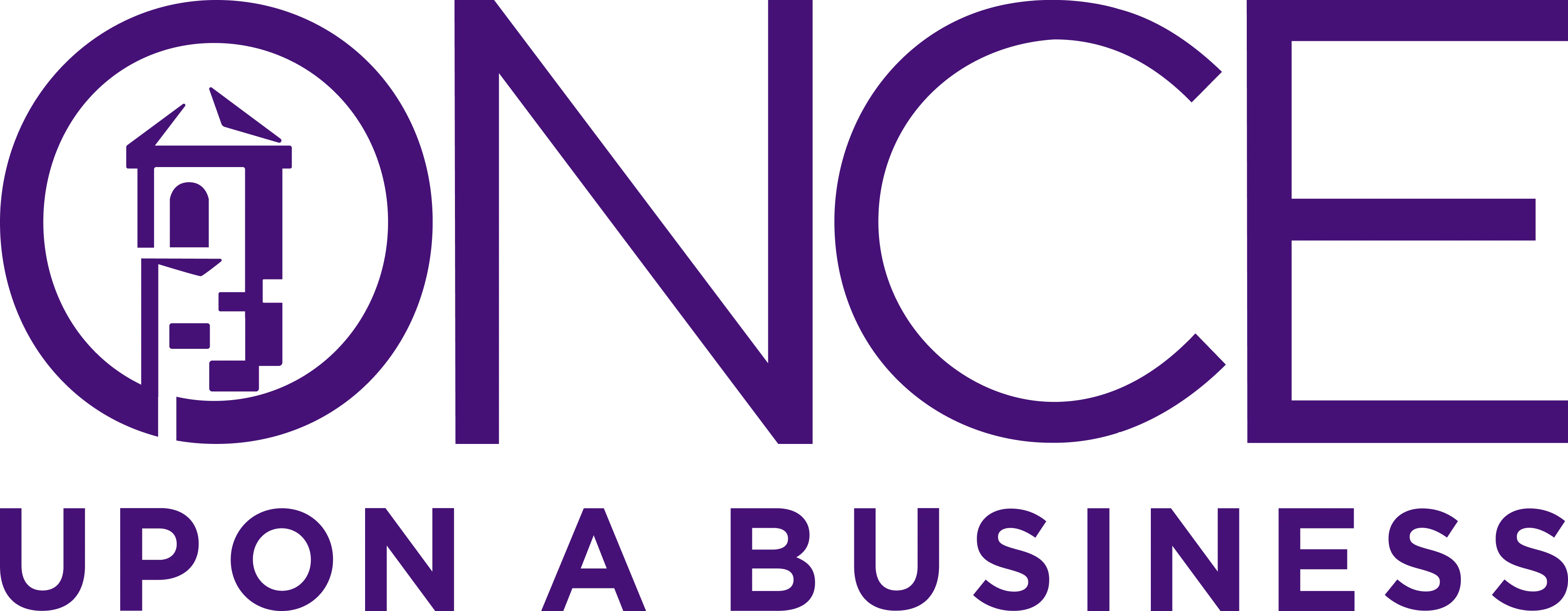
Your client's sales team just lost another "sure thing" deal. The prospect went through every stage of their pipeline—initial contact, needs assessment, demo, proposal—and then vanished. Sound familiar?
Here's the uncomfortable truth: Most sales pipelines are designed backwards. They're built around what the company needs to track, not what the customer needs to experience. Your client's CRM is measuring internal milestones ("Demo Completed," "Proposal Sent") while completely ignoring the external reality of how trust is actually built and buying decisions are made.
The solution isn't a better CRM or more sales training. It's a fundamental redesign of the pipeline architecture itself. What I call the Trust-Based Pipeline—a system that treats every stage as a deliberate step in building customer confidence rather than checking boxes for internal reporting.
This approach transforms your agency positioning immediately. You're no longer just implementing software; you're architecting a customer-centric revenue engine that aligns with how humans actually make purchasing decisions. The difference between a company-centric pipeline and a trust-based pipeline is the difference between being a CRM vendor and being a strategic systems partner.
What Makes Traditional Pipelines Fail?
Before we architect the solution, we need to understand why conventional pipeline design creates the problems your clients are experiencing.
The Internal Milestone Trap
What it looks like: Traditional pipelines use stages like "Qualified Lead," "Discovery Call Scheduled," "Proposal Presented," and "Contract Negotiation." These stages tell the sales team what they've accomplished, but they reveal nothing about the prospect's actual readiness to buy.
Why it fails: These stages measure seller activity, not buyer psychology. A prospect can have completed a "Discovery Call" and still have zero trust in your client's ability to solve their problem. They can receive a "Proposal" and still be unclear about why they should choose your client over competitors.
The result: Sales reps advance prospects through stages based on completed tasks rather than validated trust, leading to inflated pipeline forecasts and unexpected deal losses.
The Premature Pitch Problem
What it looks like: Because traditional pipelines focus on internal milestones, sales teams rush to present solutions before trust is established. They move from "Needs Assessment" directly to "Proposal" without ensuring the prospect truly believes in their expertise.
Why it fails: People don't buy from companies they don't trust, regardless of how good the solution is. When trust hasn't been systematically built, every proposal becomes a price-focused negotiation instead of a logical next step in a trusted relationship.
The result: High proposal volumes with low close rates, extended sales cycles, and constant pressure to discount prices to win deals.
The Content-Free Journey
What it looks like: Traditional pipelines track meetings and calls but don't systematically deliver value between touchpoints. Prospects are moved through stages without receiving educational content, proof points, or trust-building materials specific to their position in the buying journey.
Why it fails: Trust isn't built in meetings; it's built through consistent demonstration of expertise and understanding. Without systematic content delivery aligned to pipeline stages, prospects lose momentum between conversations and start exploring alternatives.
The result: Deals stall in the pipeline, prospects go dark between meetings, and sales cycles extend indefinitely.
Architecting the Trust-Based Pipeline: A Customer-Centric Framework
The Trust-Based Pipeline flips traditional thinking. Instead of tracking what your client's sales team has done, it tracks what the prospect has experienced and measures their progression through five distinct stages of trust development.
Stage 1: Problem Awareness - "I Have This Issue"
What this stage represents: The prospect recognizes they have a problem and becomes aware that your client exists as a potential solution provider. This is about establishing credibility as someone who understands their industry and challenges.
Trust milestone to achieve: The prospect thinks, "These people clearly understand businesses like mine and the specific problems we face."
CRM implementation: Create a custom field called "Awareness Stage Completion" with automated scoring based on:
- Which problem-focused content pieces they've consumed
- Time spent on specific website pages that address their industry challenges
- Engagement with educational emails that demonstrate understanding of their situation
- Attendance at webinars or events focused on their specific problem set
Content requirements for this stage:
- Industry-specific case studies showing problem identification
- Educational blog posts that articulate their challenges better than they can
- Diagnostic tools or assessments that help them quantify their problem
- Comparison guides that position their current situation against industry benchmarks
Stage 2: Solution Education - "This Could Work for Me"
What this stage represents: The prospect understands not just that your client can solve their problem, but how the solution works and why this approach is superior to alternatives. This stage builds confidence in the methodology, not just the company.
Trust milestone to achieve: The prospect thinks, "I understand exactly how this solution works and why it's the right approach for our situation."
CRM implementation: Create an "Education Stage Completion" field tracking:
- Consumption of methodology-focused content (white papers, implementation guides)
- Participation in solution-focused demos or presentations
- Download of detailed process documentation or frameworks
- Engagement with technical content that explains the "how" behind results
Content requirements for this stage:
- Detailed methodology documentation that can be shared with their team
- Process flowcharts showing exactly how implementation works
- Technical specifications or requirements that demonstrate thoroughness
- Behind-the-scenes content showing your approach in action
Stage 3: Proof Validation - "This Works for Others Like Me"
What this stage represents: The prospect sees concrete evidence that this solution has worked for businesses similar to theirs, with specific, measurable results they can relate to their own situation.
Trust milestone to achieve: The prospect thinks, "I can see exactly how this would work in our business based on these proven results."
CRM implementation: Track "Validation Stage Completion" through:
- Review of case studies specific to their industry or company size
- Reference calls completed with existing clients in similar situations
- Analysis of ROI calculations or performance metrics from comparable implementations
- Engagement with testimonials or success stories from their peer group
Content requirements for this stage:
- Detailed case studies with specific metrics and timeframes
- Video testimonials from clients in similar industries or situations
- Reference client contact information for direct conversations
- Performance dashboards showing real results from comparable implementations
Stage 4: Investment Justification - "I Can Sell This Internally"
What this stage represents: The prospect has the tools and information necessary to justify the investment to their team, boss, or board. This stage is about providing ammunition for internal advocacy, not just agreement from the primary contact.
Trust milestone to achieve: The prospect thinks, "I have everything I need to get approval and support from my team for this investment."
CRM implementation: Measure "Justification Stage Completion" by tracking:
- Download and usage of ROI calculators specific to their business model
- Review of budget justification templates or business case frameworks
- Access to implementation timeline and resource requirement documentation
- Engagement with cost comparison tools or competitive analysis materials
Content requirements for this stage:
- Customizable ROI calculators with industry-specific variables
- Business case templates they can present to leadership
- Implementation roadmaps showing timeline, resources, and milestones
- Risk mitigation documentation addressing common concerns
- Comparative analysis positioning your solution against alternatives
Stage 5: Decision Confirmation - "This Is the Logical Next Step"
What this stage represents: The proposal or agreement is presented not as a sales pitch, but as a confirmation of the journey they've already taken. The "sale" has already happened through the trust-building process; this stage simply formalizes the relationship.
Trust milestone to achieve: The prospect thinks, "Given everything we've learned and validated, working together is the obvious next step."
CRM implementation: Track "Decision Stage Readiness" through:
- Completion of all previous stage requirements with high engagement scores
- Internal stakeholder involvement in the validation and justification stages
- Confirmed budget allocation and timeline requirements
- Agreement on success metrics and implementation expectations
Content requirements for this stage:
- Streamlined agreement documentation focused on implementation details
- Success partnership frameworks showing how you'll work together
- Clear project kickoff processes and communication protocols
- Defined success metrics and accountability measures
Technical Implementation: Building Trust-Based Automation
The power of the Trust-Based Pipeline isn't just in the conceptual framework—it's in the systematic automation that ensures every prospect receives the right content at the right time to build maximum trust.
Custom Field Architecture
Your CRM needs specific fields to track trust progression rather than just activity completion:
Trust Score Fields:
- "Problem Awareness Score" (0-100 based on problem-focused content engagement)
- "Solution Understanding Score" (0-100 based on methodology content consumption)
- "Proof Confidence Score" (0-100 based on case study and reference engagement)
- "Internal Justification Readiness" (0-100 based on business case material usage)
- "Decision Authority Confirmation" (Yes/No based on stakeholder involvement verification)
Content Engagement Tracking:
- "Last Content Consumed" (automatically updated with each new interaction)
- "Content Category Focus" (Problem/Solution/Proof/Justification based on recent activity)
- "Engagement Depth Score" (time spent, downloads completed, shares with colleagues)
- "Stakeholder Involvement Level" (number of internal team members engaged in process)
Automated Stage Progression Rules
Unlike traditional pipelines where reps manually advance prospects, trust-based progression should be automated based on verified engagement thresholds:
Stage 1 to Stage 2 Trigger:
- Problem Awareness Score reaches 70+
- At least 3 problem-focused content pieces consumed
- Minimum 15 minutes total engagement time with educational materials
- Completion of diagnostic assessment or problem quantification tool
Stage 2 to Stage 3 Trigger:
- Solution Understanding Score reaches 70+
- Downloaded detailed methodology documentation
- Attended solution-focused demo or presentation
- Spent minimum 20 minutes on technical implementation content
Stage 3 to Stage 4 Trigger:
- Proof Confidence Score reaches 70+
- Reviewed minimum 2 case studies relevant to their situation
- Completed reference call or testimonial review
- Engaged with ROI or performance metric documentation
Stage 4 to Stage 5 Trigger:
- Internal Justification Readiness reaches 80+
- Downloaded and used business case or ROI calculation tools
- Multiple stakeholders involved in content review process
- Confirmed budget authority and timeline requirements
Nurture Sequence Design
Each stage requires specific automated nurture sequences designed to systematically build the required trust elements:
Problem Awareness Nurture (Stage 1):
- Day 1: Industry challenge identification guide
- Day 3: Problem quantification assessment tool
- Day 7: Comparative analysis showing cost of inaction
- Day 10: Industry benchmark report highlighting gaps
- Day 14: Case study showing problem recognition and impact
Solution Education Nurture (Stage 2):
- Day 1: Detailed methodology overview document
- Day 4: Implementation process flowchart and timeline
- Day 8: Technical requirements and specifications guide
- Day 12: Behind-the-scenes implementation video content
- Day 16: FAQ document addressing common methodology questions
FAQ: Advanced Pipeline Questions for Agency Owners
1. "How do I convince a client to rebuild their entire pipeline when they just want me to fix their current one?"
Position this as evolution, not replacement. Say: "Your current pipeline tracks what your team does. This approach tracks what your customers experience. We're not changing your process—we're making it customer-centric so it actually converts."
Show them the math: If their current pipeline converts 15% of qualified leads and the trust-based approach converts 35% (industry standard for properly designed trust pipelines), they can achieve more revenue with fewer leads. That's not just pipeline improvement; that's revenue multiplication.
2. "This seems complex. Won't it overwhelm the sales team with more tracking requirements?"
The opposite is true. Traditional pipelines require manual stage advancement and constant data entry. Trust-based pipelines use automated scoring and stage progression based on prospect behavior, reducing manual work for the sales team.
Sales reps stop guessing about prospect readiness and start receiving automated alerts when someone has demonstrated sufficient trust to move forward. They focus on conversations, not data entry.
3. "What if a prospect wants to move faster through the stages than the system suggests?"
Trust-based staging doesn't slow down ready buyers—it accelerates them. If someone has quickly consumed all Stage 1 and Stage 2 content, they'll automatically advance to Stage 3 ahead of schedule.
The system prevents premature advancement (proposing to someone who hasn't developed trust) while enabling fast-track progression for highly engaged prospects. It's buyer-centric speed, not artificial delays.
4. "How do I measure the ROI of switching to this pipeline model versus optimizing what they already have?"
Present three key metrics: Close rate improvement (trust-based pipelines typically see 20-40% higher conversion), sales cycle reduction (educated prospects make decisions faster), and average deal size increase (trusted advisors command premium pricing).
Most importantly, measure predictability improvement. Trust-based pipelines with proper scoring provide much more accurate forecasting because they measure buyer psychology, not seller activity.
5. "What if the client's industry has a very short sales cycle that doesn't allow for this much nurturing?"
Trust-building doesn't require time—it requires systematic value delivery. In short-cycle industries, all five stages can happen within days or weeks through intensive content sequences and concentrated proof delivery.
The framework adapts to cycle length while maintaining the principle: every buyer needs to experience problem awareness, solution education, proof validation, and justification preparation before making confident purchase decisions.
From Seller-Centric to Buyer-Centric Systems
Here's what most agencies miss about pipeline design: A pipeline isn't a sales tracking system. It's a trust architecture system.
Every traditional CRM treats the pipeline as an internal reporting tool designed to help sales managers forecast revenue and track rep activity. But prospects don't care about your internal milestones. They care about whether they can trust you to solve their problem better than anyone else.
The Trust-Based Pipeline recognizes that modern B2B buying is fundamentally about risk mitigation. Every prospect is asking the same questions: "Can I trust these people to deliver what they promise? Do they understand my specific situation? Have they solved this problem for others like me? Can I justify this investment to my team?"
When your pipeline systematically addresses these trust questions through automated content delivery and engagement tracking, several things happen:
- Sales conversations become consultative instead of persuasive. Reps stop pitching and start diagnosing because the system has already built the foundational trust required for honest conversation.
- Proposals become confirmations instead of presentations. By the time someone reaches Stage 5, they've already been educated, validated, and justified. The proposal simply documents the relationship they want to formalize.
- Pipeline forecasting becomes predictable instead of wishful. When you're measuring buyer psychology instead of seller activity, you can accurately predict which deals will close because you know exactly how much trust has been established.
- Marketing and sales become aligned instead of adversarial. Both teams focus on the same objective: systematically building prospect trust through valuable content delivery rather than debating lead quality versus follow-up effectiveness.
This isn't just a better way to organize your CRM. It's a fundamental shift from treating prospects as targets to be convinced to treating them as humans who need confidence before they can make important business decisions. - Strategy without systems is a fairy tale. But systems without customer psychology are just sophisticated spreadsheets. The Trust-Based Pipeline bridges that gap by creating systematic trust development that feels personal and valuable to every prospect.
Your Strategic Advantage: Stop Competing on Features, Start Competing on Philosophy
You have a choice. You can continue being the agency that helps clients "optimize their sales process," or you can become the strategic partner who transforms their entire approach to customer relationship building.
When competitors pitch "better lead management," you present "customer-centric revenue architecture." When they offer "sales automation," you deliver "systematic trust building." The conversation shifts from technical implementation to strategic philosophy, and philosophy always wins.

Discover Your Happily Ever After
Subscribe to get weekly updates on how you can start handling departmental plot holes in your story!






